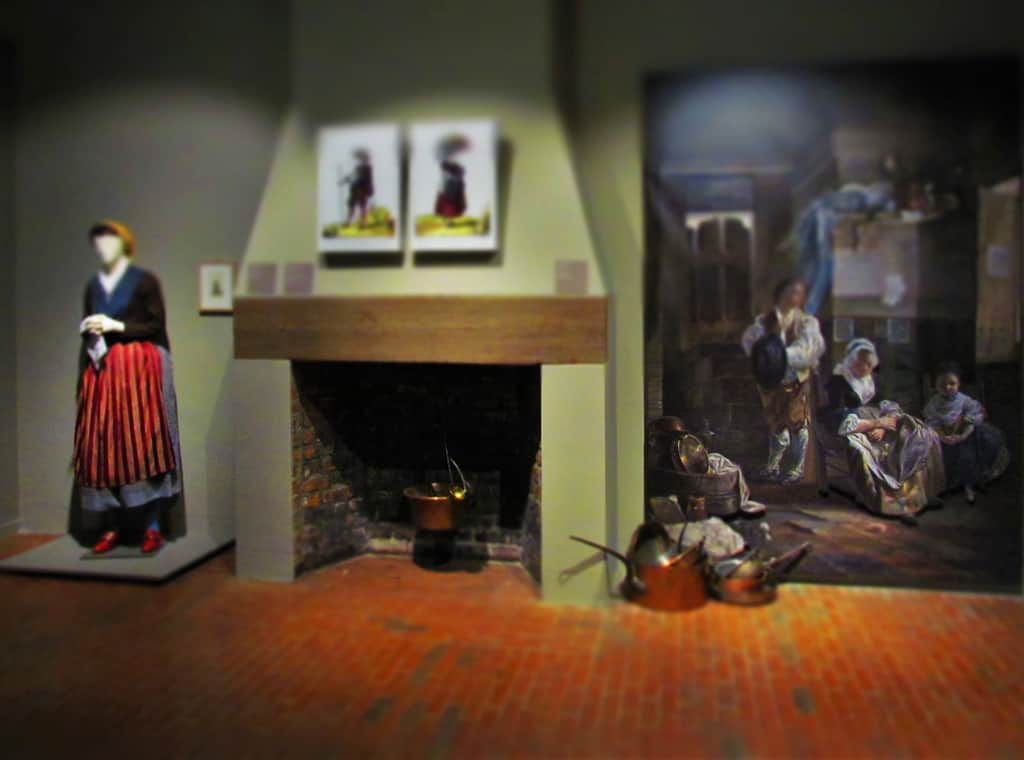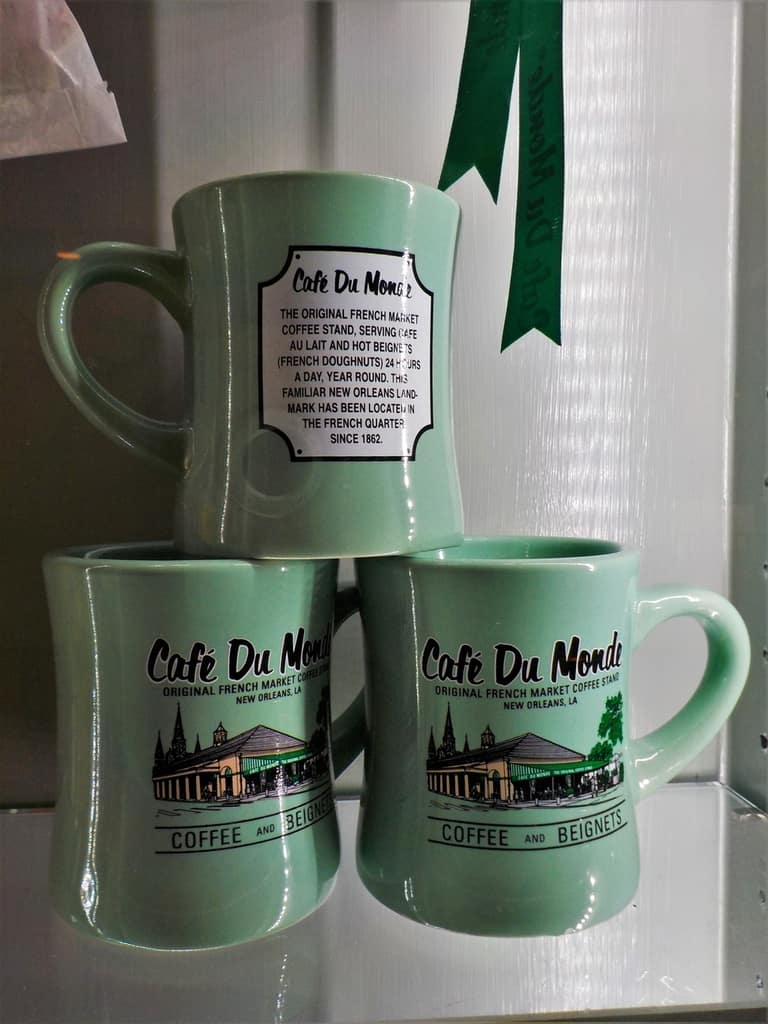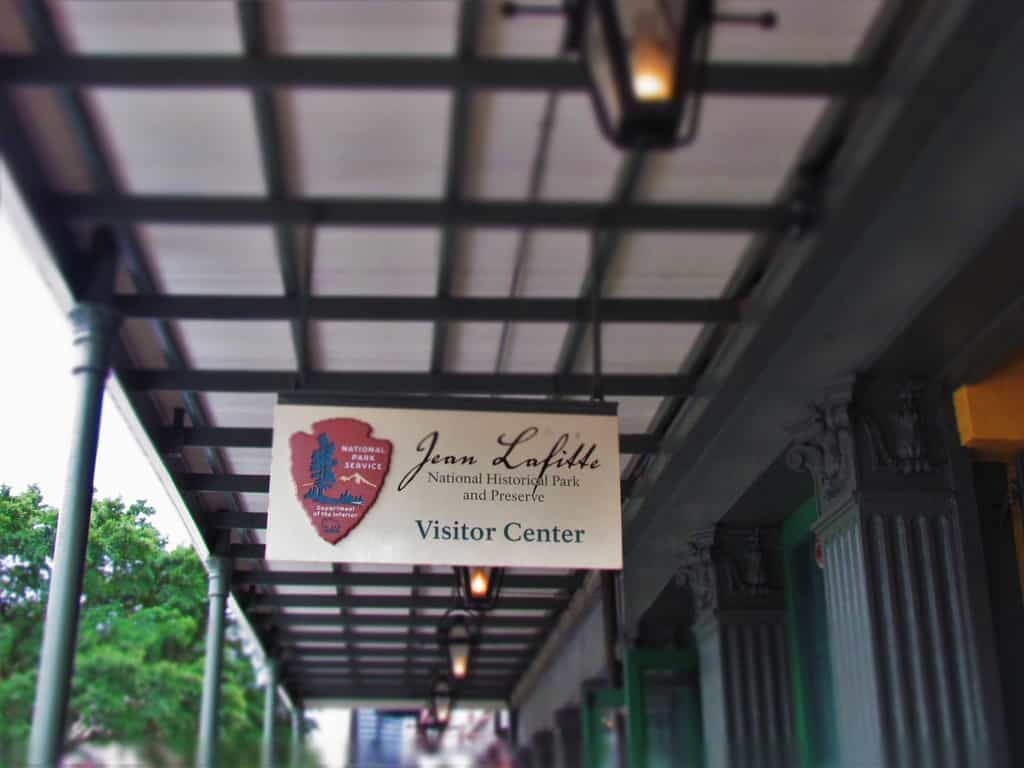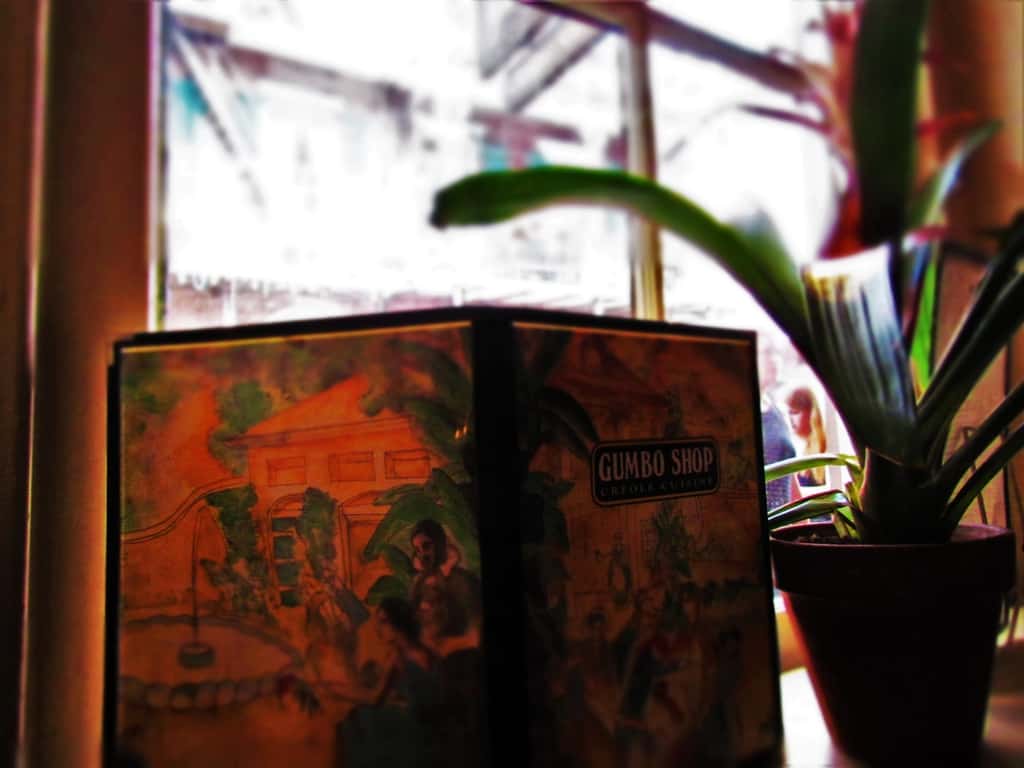No visit to New Orleans would be complete without seeing Jackson Square. This parklike setting is named for Andrew Jackson, who is considered one of the key heroes from the War of 1812. All around the square, you will find some of the oldest buildings in the city. To learn more about the early days of New Orleans, we dropped by the Cabildo for some historic education.
We would like to thank the Louisiana State Museum for their hospitality. Rest assured all opinions are our own.
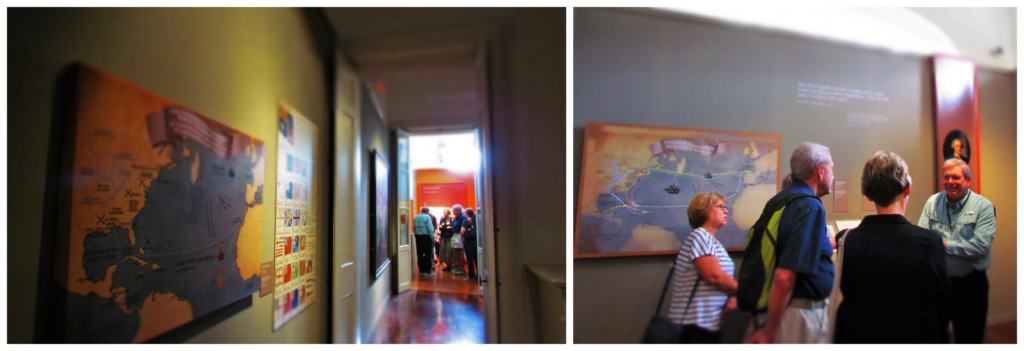
Seeing It Our Way
The Cabildo has a history that is intertwined with the Crescent City. Built just before 1800, the building was the site of the Louisiana Purchase transfer in 1803. Throughout the 1800’s, the Cabildo served a role in governmental duties. It even served as the headquarters for the Louisiana Supreme Court, for many years. In 1908, the Louisiana State Museum took over use of the building for the purpose of educating the public on the historical significance of the city. These days visitors can wander the museum on a self-guided approach or choose to join one of the guided tours. Since we have our own unique approach when it comes to research, we chose to go it on our own.
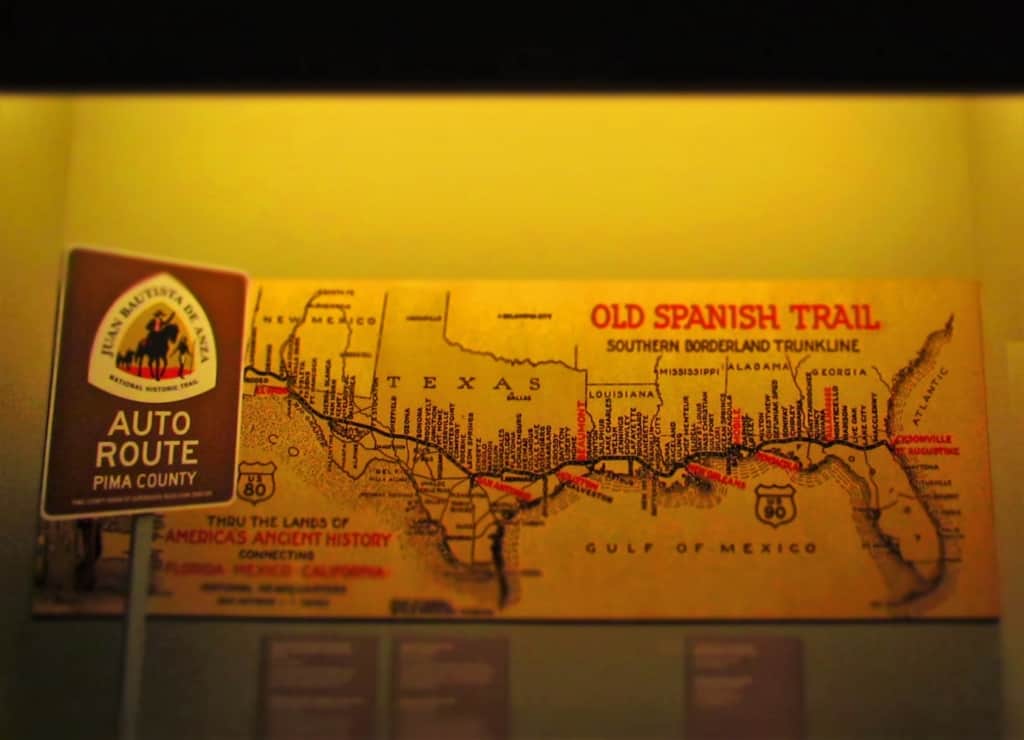
The Early Days in New Orleans
The earliest days of the city began as a French trading camp along the banks of the Mississippi River. Before long, a small grid of plotted streets were laid out in the area which would become known as the French Quarter. In this grid was the Plaza d’Armes, which would later become known as Jackson Square. This multiple use space held parade grounds for troops, as well as an open air market. The governor’s mansion, which in Spanish is called Cabildo, faced the square. While the French were some of the earliest residents, they gave up control of Louisiana territory to the Spanish to repay a war debt. Many of the buildings constructed in the late 1700’s bear the Spanish influence.
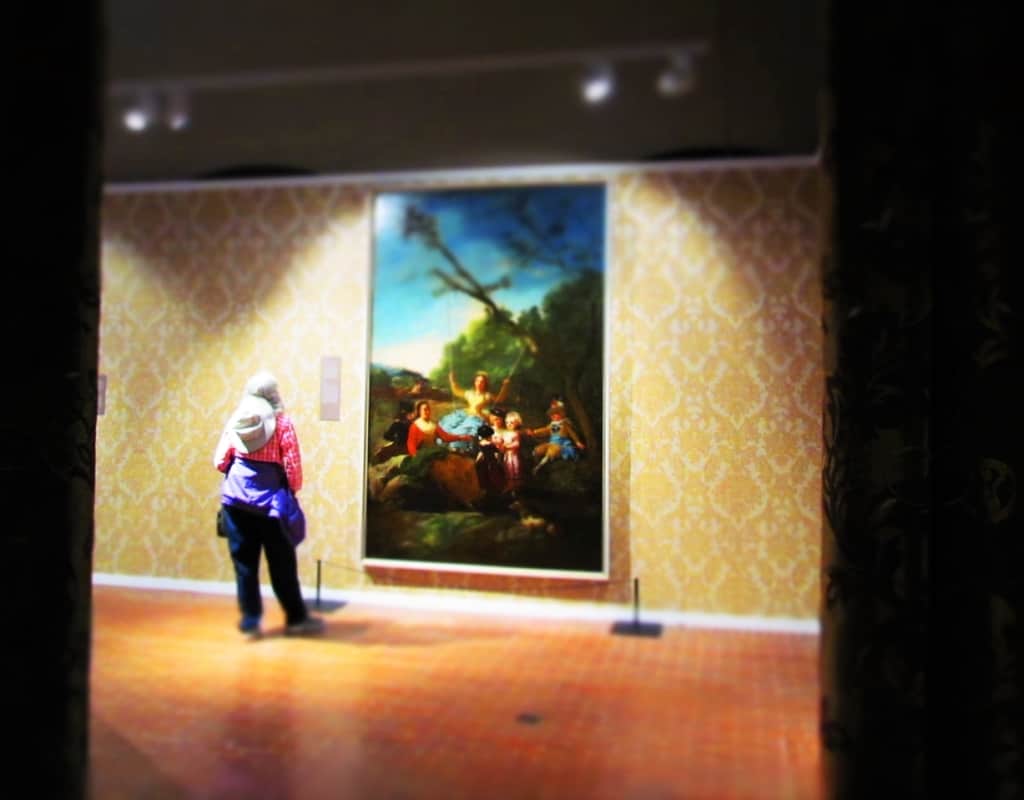
Touring the Cabildo
Now that we have a little background on the building, let’s dive into the interior. The Cabildo has three floors of exhibits that display the early days of New Orleans life. Since the building was not built as a museum, the exhibits are designed to fill the spaces available. Much of the area is a series of hallways that lead to various rooms. The staff has done an excellent job at leading visitors through time, as they pass through the spaces. Beautiful paintings and sculptures highlight life in a simpler time, and clearly reflect the French and Spanish influences during these early years.
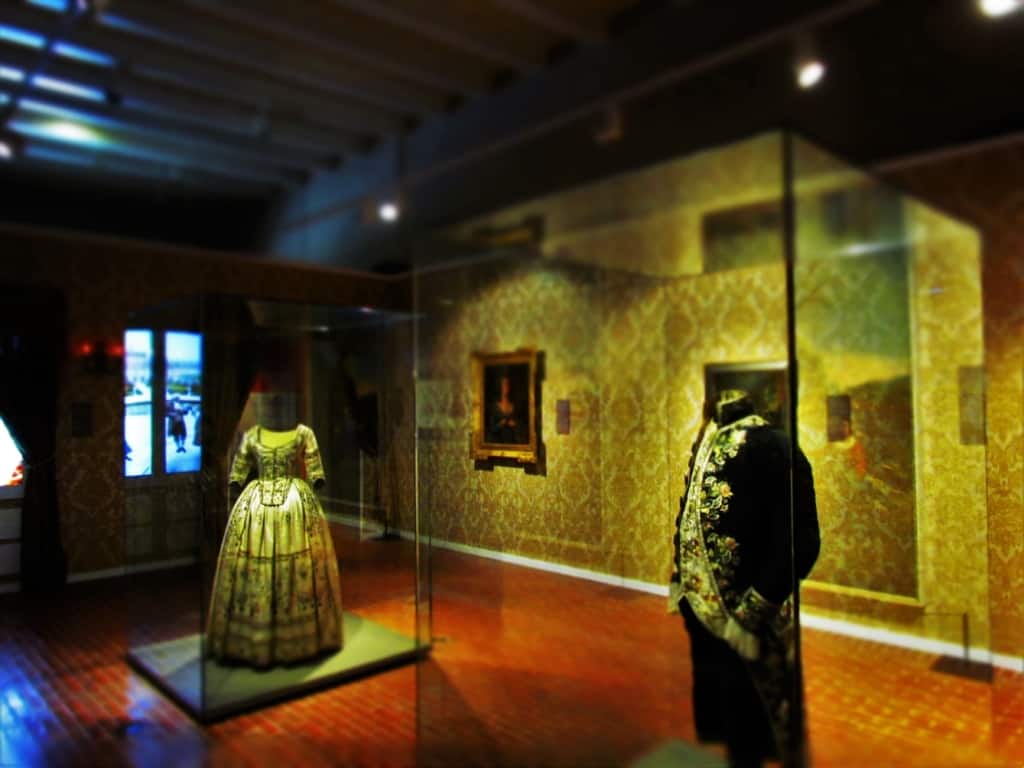
Shall We Dance?
The late 1700’s and early 1800’s were a period filled with formality. Since this part of the city was the headquarters for the government agencies, it would have seen a variety of elegant events. One of the galleries we toured whisked us back in time to the days of fancy parties. We could almost imagine ourselves at the Governor’s Ball.
Scattered throughout the museum are a series of video boards, that help show life during the various periods. We really enjoyed this one, that highlights some of the fanciful dance steps. Can you imagine performing such a highly choreographed dance, while wearing these heavy garments? It must have been quite the spectacle.
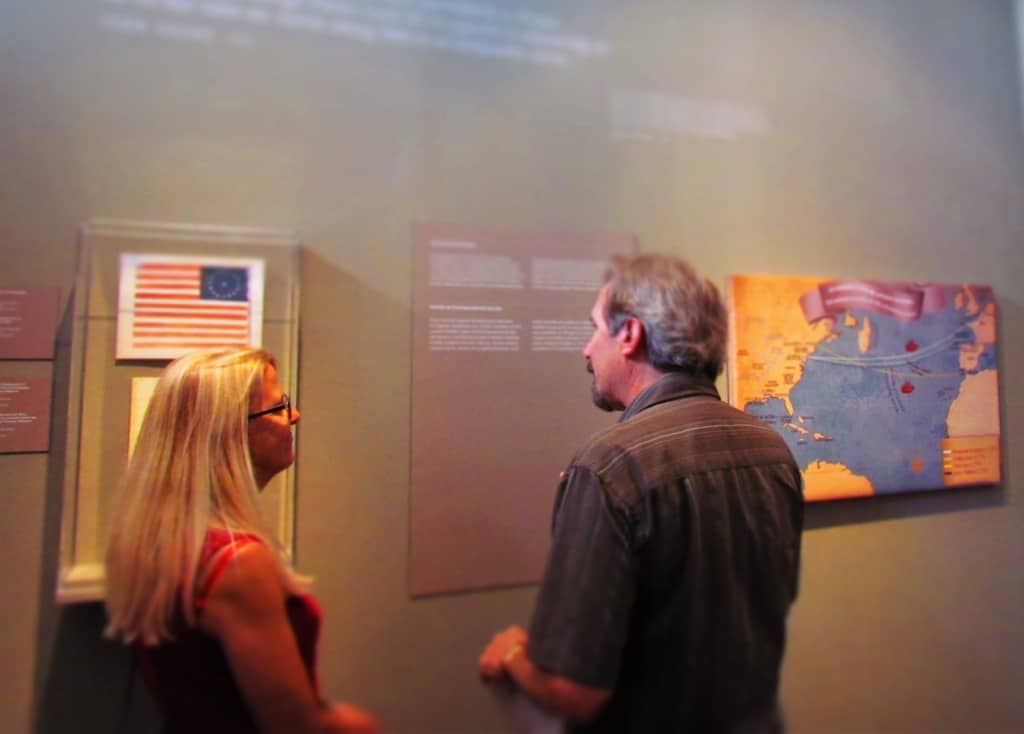
A Telling Time in New Orleans
As we continued to move forward in time, we came to the period that focuses on a turning point in New Orleans history. Many are well aware of the Revolutionary War, which determined the right for the United States to be self-ruled. A variety of causes were affecting the political atmosphere in the early 1800’s, and with them was the desire of expansion by the new American country. The War of 1812 had many causes and effects, which will be held for some other article, but here we will focus on the tail end of the conflict.
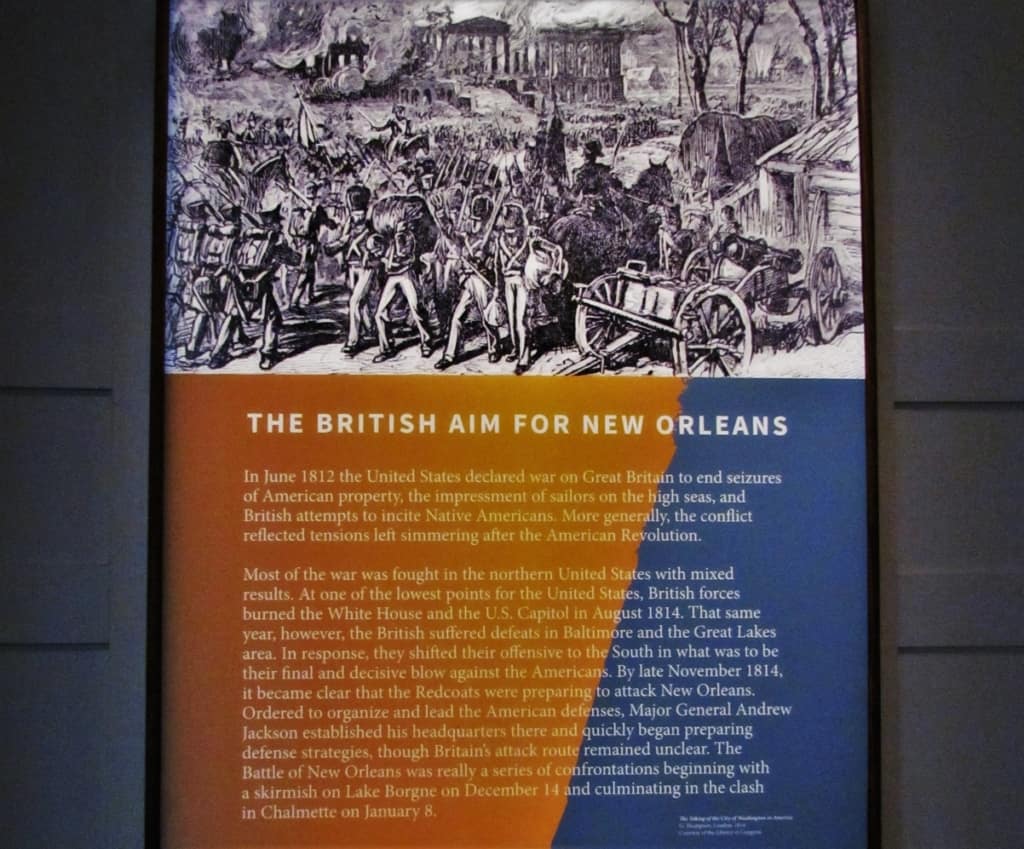
War During Peace
After four years of skirmishes and ruffled feathers, both the U.S. and Britain had tired of the war. The citizens of both countries were ready to return to a non-combative lifestyle. In late 1814, peace negotiations were completed with the Treaty of Ghent. The knowledge of this treaty had not yet reached all of the British troops. One group was preparing for an invasion into Louisiana, which would become the final battle of the war.
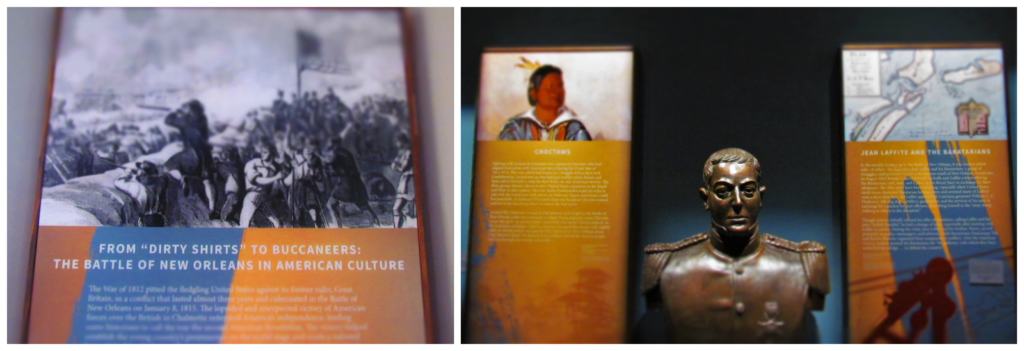
Rallying Troops in New Orleans
By mid-December of 1814, about 60 British ships were parked in the Gulf of Mexico near New Orleans. With over 14,000 troops on board, this was a significant threat to the territory. A small number of American gunboats were preventing the British from accessing the nearby lakes. After a short skirmish, the British were able to commandeer a foothold on land east of New Orleans.
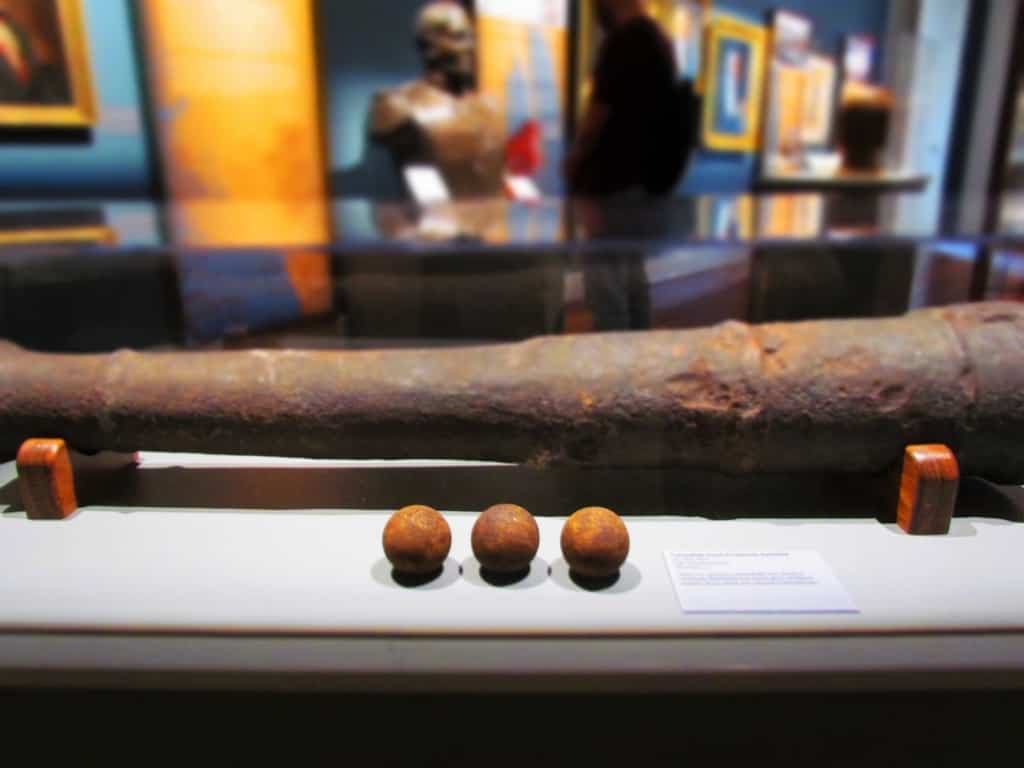
Moving westward, about 1800 British soldiers made their way to the eastern edge of the Mississippi River, by December 23rd. As luck would have it, the British decided to wait for reinforcements at this point. If they had continued their pursuit at the time, they would have found the road to the city undefended. News of the advancement made its way to General Andrew Jackson, who quickly assembled forces for an assault on the encampment. While the attack only inflicted minor casualties, it did add to the cautious nature of the British advancement. This would offer American forces valuable time to prepare for the successful defense of the city. The final battle would be one of the most lopsided victories of the war.
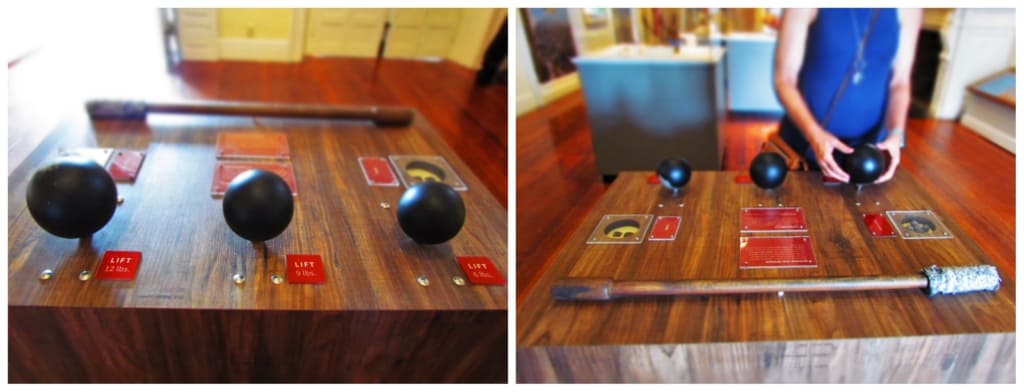
Defending The Waterways
Key to the American defenses were the use of cannons and howitzers. A wide range of sizes were installed along the banks of the river. The Cabildo includes plenty of information about these defensive works, as well as a chance to see what the soldiers would have experienced. Since the cannons were various sizes, each would have used a specific size of cannonball. A display at the museum allows guests to feel the weight of each ball, as well as seeing one of the cannons used during the defense of the city. It’s an eye opener, when you consider how many shots would have been required during a battle.
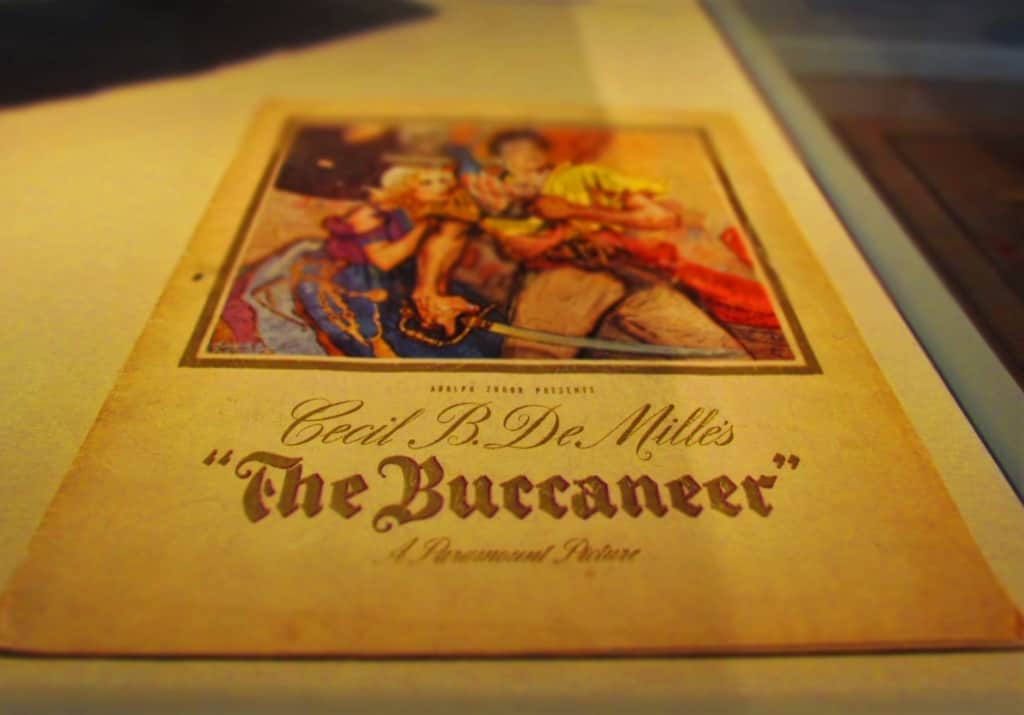
Sensationalized Participant
In a previous article, we told the story of Jean Lafitte. This privateer (Fancy name for a pirate) helped turn the tide for American forces during the battle of New Orleans. (You can read that story here.) The sensationalism of the pirate turned hero would become a legend that was repeated for future generations. In 1938, Movie maker Cecil B. De Mille would release The Buccaneer, which would be remade in 1958 by his son-in-law Anthony Quinn. This highly fictionalized version of history was still fun to watch, even if it was inaccurate on many points.
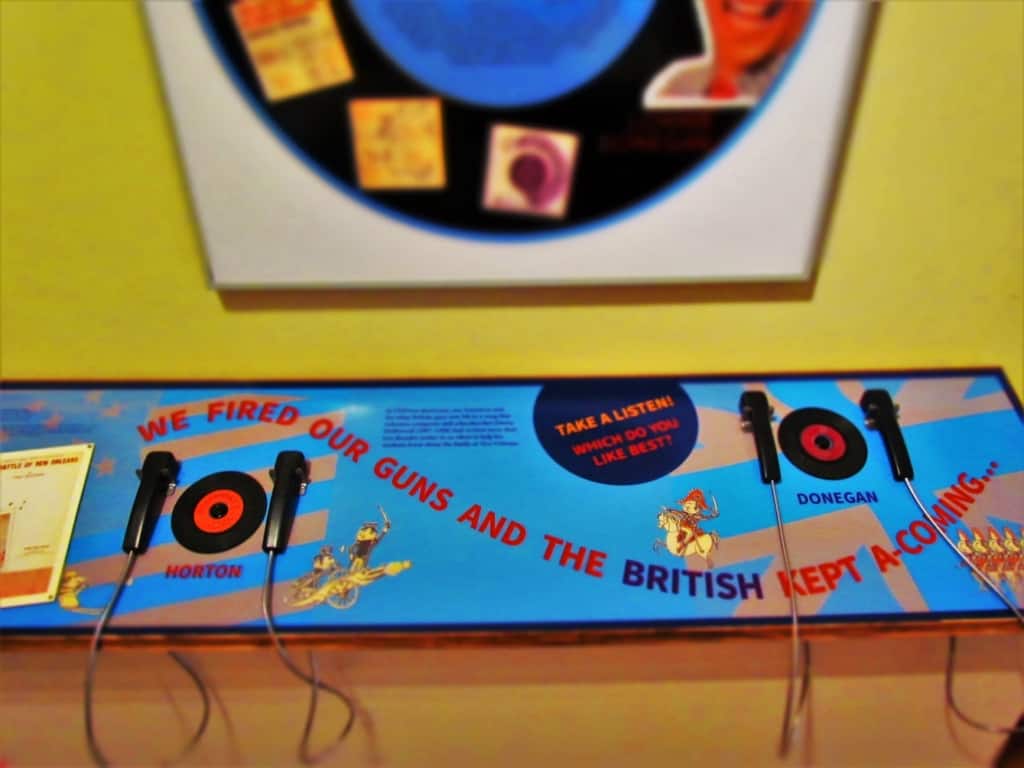
The Hits Keep Coming
The Battle of New Orleans not only made it to the silver screen, it also became popular over the air waves. A school principal form Arkansas penned a comical tune based loosely on the events of this final battle. It was recorded by many artists, but one of the most popular versions was performed by Johnny Horton. We had a chance to listen to two of the more well-known recordings and decide which we liked the most. Listening to the song, we could remember it from our childhoods. Little did we realize at that time that the melody was referring to the early days of New Orleans. It just goes to show how things can come full circle.
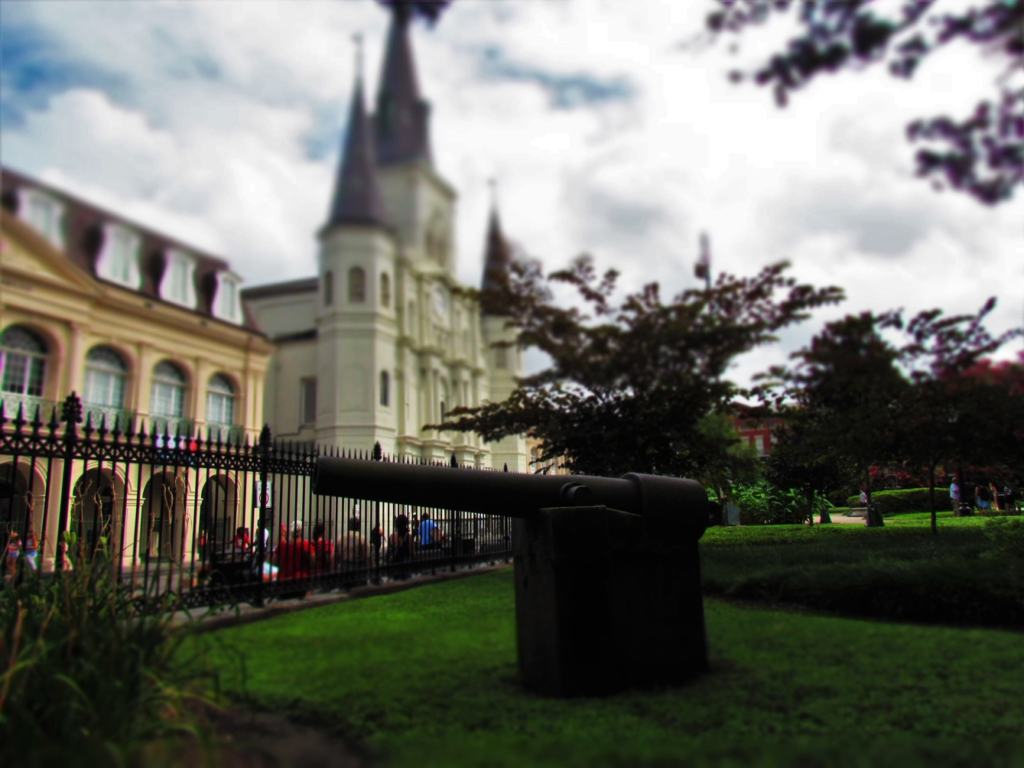
Back in The Big Easy
We wrapped up our tour of the Cabildo, and headed back out into Jackson Square. The warm, moist air greeted us, as we squinted from the midday light. The bustling crowd outside was comprised of a mix of tourists, shoppers, and entertainers. An amatuer jazz band played in the courtyard, as artists hawked their paintings along the fence line. Everywhere we looked was action, yet it seemed so relaxed and purposeful. This is New Orleans. It is a beautiful city filled with eclectic people who each bring their own story to bear in the tapestry that makes up the atmosphere. It’s unlike any other city on the planet, and begs to be explored. Have you ever visited The Big Easy? What were some of the special places you discovered?


